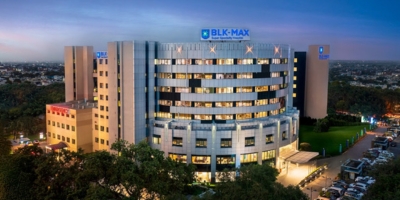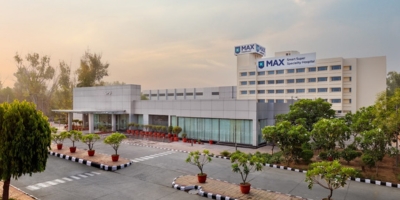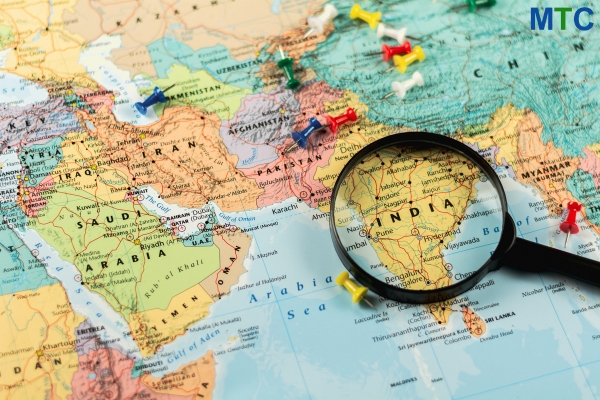Medically Reviewed By: Dr Meenakshi Maruwada (BDS)
Bone Marrow Transplant for Aplastic Anemia in India
Uncover bone marrow transplant for aplastic anemia in India. This comprehensive guide covers costs, procedures, donor options, and success rates to give you a complete view of this life saving procedure.
Empower your health with a low-cost yet high-quality bone marrow transplant today!
What is the Cost of Bone Marrow Transplant for Aplastic Anemia in India
In India, a bone marrow transplant for aplastic anemia typically costs between $30,000 and $35,000.
Using donor cells from an unrelated individual for the transplant can cost between $70,000-$75,000 in India. The cost for the same in the US exceeds $250,000.
Aplastic anemia usually requires allogeneic transplants, where healthy donor cells are used instead of the patient's cells (autologous). Read more details in the procedure and overview section.
The table below shows the treatment cost in India compared to the US.
Cost of Bone Marrow Transplant for Aplastic Anemia in India vs US (USD)
| Transplant type | Details | Cost in India | Cost in the US |
| Allogeneic transplant | External donor with a complete HLA match | $30,000-$35,000 | ~$250,000- $290,000[1] |
| Haplo-allogeneic transplant | External donor with a partial HLA match | $40,000-$45,000 |
*Please note that the costs shown in the table are approximations only. Actual expenses may differ based on the type of transplant and each patient's health status.
Opting for a bone marrow transplant in India over the US offers more than 80% savings without compromising treatment quality.
In India, bone marrow transplants offer highly effective treatment options for various blood-related diseases, immune disorders, and genetic conditions.
Read the complete guide to Bone Marrow Transplant for Sickle Cell Disease in India: Cost & Success Rate for further details.
Procedure: Get a Bone Marrow Transplant for Aplastic Anemia in India
India is quickly rising to the top of the list for a bone marrow transplant with its hematology specialists, cutting-edge medical facilities, and reasonably priced treatment offers.
Find out how international patients can get treatment for aplastic anemia using a bone marrow transplant in India.
First Touch Point With Our Medical Advisors
Medical advisor reviewing preliminary reports of a patient
Our medical tourism consultants connect with patients from other nations and assist them in selecting the best bone marrow transplant program. Patients first provide our advisors with preliminary reports. The reports include:
- Gene tests
- Initial scans
- Existing lab reports
- High-resolution HLA reports
Low-resolution images will not give doctors accurate results. If you do not have existing medical reports, do not worry.
Our team is ready to support you; get in touch, and we will guide you through the process.
Why Is HLA Important for Bone Marrow Transplant?
Our bodies contain a gene called Human Leukocyte Antigen (HLA).[2] The patient's HLA count must match the donor's HLA to get a bone marrow or stem cell transplant.
The patient's immune system attacks stem cells from an unmatched HLA if they enter the body because it perceives them as 'foreign.'
The patient's body will accept the healthy bone marrow and recover only if the HLA match is perfect.
Identifying the Right Donor Is the Key
After finding you the right bone marrow transplant program, specialists examine initial reports and plan for treatment.
| Donor type | Relation with the patient | Match Level |
| Allogeneic | Sibling | Complete |
| Hapto-allogeneic | Parent, child, or relative | Partial (50%) |
| Allo-Matched Unrelated Donor | Unrelated, identified from the donor registry | Complete |
Usually, a perfect HLA-matched sibling is the donor for an allogeneic transplant.
A partial match (Haplo-allogeneic) donor may work if there are no siblings. Research has shown that this transplant type, however, has a higher chance of rejection.[3]
Patients can search the global donor registry to avoid this issue to locate 'matched unrelated donors'. This approach can be costly but increases the likelihood of finding a suitable patient match.
Are There Other Donor Options if HLA Does Not Match With Relatives?
Our partner hospitals in India maintain a registry for donors providing umbilical blood, which contains stem cells that can be used to generate healthy bone marrow.[4]
Upon identifying a suitable donor, we schedule appointments for the bone marrow transplant, and the patient's visit to India.
Travel to India for Bone Marrow Transplant
During the entirety of the patient's treatment, the doctor plans the exact travel time to India for the patient.
But what is the exact timing?
Before a bone marrow transplant, the patient requires 2-3 sessions of chemotherapy to kill the abnormal stem cells. This is called Induction. The patient can get this done in their home country or India.
The timeline for the treatment is provided below:
| Phase during the treatment | Duration |
| Pre-transplant | 1 month |
| Main procedure | 35 days (hospital stay) |
| Post-transplant | 3 months (mandatory) |
Once we've scheduled the travel and treatment timeline, our medical advisors make sure all necessary travel documents are handled smoothly.
Patients are assigned a dedicated contact person who oversees their entire healthcare journey. Once in India, the doctor prepares for the treatment.
How to Reach India?
India location
You can reach the capital of India, New Delhi, by flying to Indira Gandhi International Airport.
It is one of the finest airports in the world, and it hosts numerous inbound and outbound international flights daily.
Flight details for traveling to New Delhi, India, are as follows:
| Departure City, Country | Airlines | Flight time | Cost in USD |
| Yangon, Myanmar | Malaysian Airlines + AirAsia X | 11 hours 40 min | $239 |
| Thai AirAsia + IndiGo | 12 hours 30 min | $240 | |
| Mandalay, Myanmar | Myanmar Airways International + IndiGo | 12 hours 25 min | $300 |
| Lagos, Nigeria | Qatar Airways | 15 hours 55 min | $575 |
| Ethiopian Airlines | 14 hours | $685 | |
| Harare, Zimbabwe | Kenya Airways + Air India | 14 hours 15 min | $481 |
| Air India | 19 hours 15 min | $512 | |
| Ethiopian Airlines | 13 hours 30 min | $555 | |
| Dar es Salaam, Tanzania | Qatar Airways | 11 hours 40 min | $342 |
| Ethiopian Airlines | 18 hours 05 min | $295 | |
| Zanzibar, Tanzania | Ethiopian Airlines | 12 hours 40 min | $546 |
| Kenya Airways + Air India | 17 hours | $525 | |
| Emirates | 18 hours 25 min | $862 |
*Note: 1-stop flights only
Process of Getting a Bone Marrow Transplant
Bone marrow transplant procedures follow a similar process for various blood-related disorders and some immune-genetic diseases. Here’s an overview of how patients undergo a bone marrow transplant.
Preparation with Intense Therapy
High doses of chemotherapy and radiation are given to destroy existing bone marrow cells and suppress the immune system – to make room for the new, healthy bone marrow cells.
Transplant Process
Bone marrow or blood stem cells from the donor are supplied using a tube placed into the veins and then transported into the bloodstream, similar to a blood transfusion.
These stem cells find their way into the bone marrow, growing new and healthy blood cells.
Post-Transplant Care
The patient is monitored under isolation in the intensive care unit temporarily.
Recovery After Getting a Bone Marrow Transplant for Aplastic Anemia in India
After the transplant procedure, the patient will typically need to remain in the hospital for several weeks. It is necessary for the new stem cells to settle into the bone marrow and generate new blood cells.
It is crucial to monitor for any side effects of the transplant, including potential relapse of aplastic anemia or other complications related to the transplant procedure itself.
During this time, the patient might require:
- Regular blood transfusions due to low blood cell counts
- Specialized, sterile rooms as they would be prone to infections, and visitors should wear protective gear.
Most patients can expect to leave the hospital within 1 to 3 months following the transplant.
However, if complications occur, such as infections, it may result in an extended hospital stay.
The bone marrow transplant process for aplastic anemia requires a team approach to transplant healthy donor cells, restore normal blood production, and improve the patient's health.
Every phase, from diagnosis and transplantation to ongoing care, is vital and demands careful coordination and specialized medical knowledge.
Pros and Cons for Bone Marrow Transplant
| Pros | Cons |
| Replace diseased, non-functioning bone marrow with healthy, functioning bone marrow | There is a risk of serious Graft vs. host disease, where the patient's body rejects foreign organs/tissues/cells |
| Restores the Immune system and helps it become strong | Chances of developing various infections (bacterial/viral/fungal) due to a weak immune system |
| Gets the patient healthy | Expensive treatment |
| Reduces ongoing chemotherapy, which causes multiple side effects | It is a long and tedious process |
Overview of Aplastic Anemia and Bone Marrow Transplant
Let us look at what Aplastic Anemia is and how it can be treated.
What is Aplastic Anemia?
- Aplastic anemia (AA) is a rare but life-threatening medical condition where the bone marrow, which normally produces blood cells (red blood cells, white blood cells, and platelets), fails to generate enough.
- The condition leaves the body prone to bleeding, leukemia, and other severe blood infections.
- If left untreated, AA may also cause serious medical problems such as irregular heartbeat and heart failure.[5]
- Although the condition is severe for the patient who acquires it, timely treatment enables individuals to fight this life-threatening illness and live a happy and healthier life.
- First-line treatments include bone marrow transplants, blood transfusions, and concomitant immunosuppressive therapy[6]using Methylprednisolone.
Different types of blood cells
Types of AA
It can be categorized into two types:
| Acquired aplastic anemia | Inherited aplastic anemia |
| More common | Rare |
| Caused by exposure to pesticides, chemotherapy, HIV infection, and certain autoimmune disorders | Caused by genetic defects which are passed down from parents to their children |
Why is Bone Marrow Transplant (BMT) Used to Treat Aplastic Anemia
In patients with aplastic anemia, bone marrow fails to produce sufficient blood cells. With BMT, unhealthy bone marrow can be replaced with healthy bone marrow or stem cells obtained from a compatible donor.
These stem cells then produce healthy blood cells, likely curing the condition. The treatment of choice for this hematological condition is allogeneic bone marrow transplantation from a fully matched HLA sibling.[7]
How Does It Work?
After examining the patient reports, a donor is identified.
Healthy bone marrow or stem cells are taken from the donor (Allogeneic / Hapto-Allogeneic / Allo-matched Unrelated Donor) and placed into the patient's body.
This healthy bone marrow starts making healthy blood cells, and with a certain period, the patient starts to recover.
Global Perspective on Aplastic Anemia and India
Aplastic anemia is a rare but serious health condition that affects people of all ages and ethnicities worldwide.
Improving diagnosis, treatment options, and support systems for those affected is vital to addressing this challenging condition globally.
- Each year in the US, there are between 500 to 1,000 new cases of aplastic anemia, as per the National Organization for Rare Disorders.[8]
- Acquired aplastic anemia has a prevalence of 27% in Zimbabwe[9]and is also notably frequent in Tanzania.[10]
- In Myanmar, acquired aplastic anemia is common, and severe cases are a major cause of death.[11]
Why India?
- A United Nations report states that Africa lacks sufficient healthcare professionals and services.[12]
- People in Myanmar with severe aplastic anemia rely on immunosuppressive therapy provided by the government because there is no health insurance available.[13]
- Besides, Western countries like the US and the UK face sky-high healthcare expenses and lengthy donor waiting times.
- India comes into the picture as it offers top-notch healthcare professionals, advanced US FDA-standard equipment, and excellent infrastructure, all at affordable prices.[14]
- Patients could benefit from quicker access to surgical procedures compared to Western nations.
- Plus, you don't have to worry about language barriers in India because most healthcare professionals can speak fluent English.
- The government has made it easier for international patients to visit India for medical reasons with a Medical Visa. Patients can visit up to three times a year and bring a relative or friend along.[15]
Success Rate of Bone Marrow Transplant for Aplastic Anemia in India
- The success rate of bone marrow transplants for aplastic anemia in India is high
- Research conducted in India and published in the Journal of Pediatric Hematology/Oncology showed that patients with aplastic anemia achieved a two-year survival rate of 93.21%.[16]
Best Hospital for Bone Marrow Transplant for Aplastic Anemia in India

The JCI-accredited facility is one of the largest private clinics in Delhi and ranks among the top 10 multi-specialty hospitals.
As part of the Max Healthcare Group, a leading provider in India, it caters to both domestic and international patients.
The hospital specializes in cancer treatment, bariatric surgery, and cardiology, using advanced equipment that meets European hospital standards.
- 60+ Years of Experience
- JCI Accredited
- NABH Accredited
- The bone marrow transplant unit at BLK Max Super Speciality Hospital is the largest in Asia.
- Skilled specialists at the center perform approximately 2400 bone marrow transplants yearly and collaborate with renowned global donor registries.
- It has a state-of-the-art blood bank with facilities like Apheresis, Blood Component Separation, and Stem Cell Harvesting.

With advanced diagnostic units, Max Smart Super Speciality Hospital, Saket, is a renowned 250-bed hospital in South Delhi, India.
It has 12 modular theatres, emergency care, Tesla MRI and Cath Labs and 50 critical beds. The hospital offers Cardiac Sciences, Orthopaedics, Urology, Neurology, Paediatrics, Obstetrics, and Gynaecology.
With 300+ specialists working here, it is a highly sought-after healthcare centre.
- NABH Accredited
- 300+ Doctors
- 22+ Departments
- Max Healthcare is renowned for its trusted medical care, particularly in bone marrow transplants.
- Their expert team of hematologists, transplant surgeons, and healthcare professionals ensure high success rates.
- With state-of-the-art facilities and advanced technology, Max Healthcare provides comprehensive care before, during, and after transplants.
- They prioritize patient comfort, offering personalized support and collaborating closely with specialists.
Best Specialist for Bone Marrow Transplant for Aplastic Anemia in India

Dr. Dharma Choudhary
Dr. Dharma Choudhary is a leading bone marrow transplant physician and hematologist in India.
He is the Vice Chairman of the Centre for Bone Marrow Transplant at BLK-Max Hospital in New Delhi.
He completed a fellowship in leukemia/BMT at Vancouver General Hospital and BC Cancer Agency.
With over 2,000 life-saving transplants, he is highly regarded in his field.
Educación
AIIMS, New Delhi, India
Membresías
- American Society of Blood and Marrow Transplant
- Life Member of Indian Society of Haematology & Transfusion Medicine
Is Bone Marrow Transplant for Aplastic Anemia Safe in India?
Yes, bone marrow transplants for aplastic anemia are safe in India, with a survival rate of about 93%, and under careful monitoring of skilled hematologists in JCI-accredited hospitals.
The country ranks 10th among 46 nations in the Medical Tourism Index.[17]
Our partner hospitals are one of the leading centers in Asia for Bone Marrow Transplants, equipped with advanced technology and dedicated staff who prioritize personalized patient care.
Conclusion
Bone marrow transplants for aplastic anemia in India are increasingly popular among international patients.
Receive safe and affordable treatment from leading hematologists of the country at premier hospitals accredited by JCI, ensuring that you receive medical and surgical care of the highest American standards.
Don’t let aplastic anemia stand in the way of your health. Reach out to us today!
FAQs
People diagnosed with aplastic anemia, other blood-related disorders, and specific immune or genetic conditions qualify for undergoing a bone marrow transplant.
Matching HLA counts between the patient and donor is a crucial criterion for eligibility, determined through pre-treatment tests. Contact us for more information about your eligibility.
In India, bone marrow transplant is considered the optimal treatment for aplastic anemia due to its high success rate of ~80% and affordable cost.
Recovery from aplastic anemia depends on age, severity of condition, and overall health. For those under 40, a bone marrow transplant can often cure the disease by restoring healthy bone marrow.
However, there is a risk of relapse (donor-type aplasia[18]or rejection of the donor bone marrow in some cases, despite the transplant being safest with a matched donor.
It may take six to twelve months, or even longer for some, for your blood count to return to normal and your immune system to fully recover. Your healthcare team will closely monitor your progress throughout this time.
Bone marrow transplants are complex treatments with associated risks like graft-versus-host disease, infections due to weakened immunity, and temporary hair loss.
The seriousness of these issues varies based on the patient's health, age, and treatment approach. Patients must understand the risks and potential benefits before opting for this treatment.
References
- National Library of Medicine: The Cost of Hematopoietic Stem-Cell Transplantation in the United States
- National Cancer Institute: Human leukocyte antigen
- National Library of Medicine: Haploidentical Stem Cell Transplantation in Adult Hematological Malignancies
- National Institutes of Health: What are the complications of aplastic anemia
- National Library of Medicine: What are the treatments for aplastic anemia?
- National Library of Medicine: A novel autologous stem cell procedure for the treatment of aplastic anaemia using reprogrammed mature adult cells: a pilot study
- Journal of Medical Economics: Healthcare costs and resource utilization in patients with severe aplastic anemia in the US
- MGM Journal of Medical Sciences: Prevalence and risk factors of acquired aplastic anemia
- American journal of hematology: High frequency of acquired aplastic anemia in Tanzania
- Blood | American Society of Hematology: Outcome of Severe Aplastic Anemia Treated with Low Dose Immunosuppression in Resource Limited World during Pandemic: Single Center Experience from Myanmar
- United Nations: African Renewal: India’s medical tourism gets Africans’ attention
- Indian Medical Association: Concept Note on Preparation of Standard Operating Procedure for Medical Tourism in India
- Journal of Pediatric Hematology/Oncology: Allogeneic Hematopoietic Stem Cell Transplant Offer Good Outcomes in Pediatric Aplastic Anemia: Experience From Developing World
- Medical Tourism Index: Medical Tourism Index 2020-2021
- National Library of Medicine: Recurrent aplastic anemia with donor-type aplasia: A rare occurrence in the Indian subcontinent








